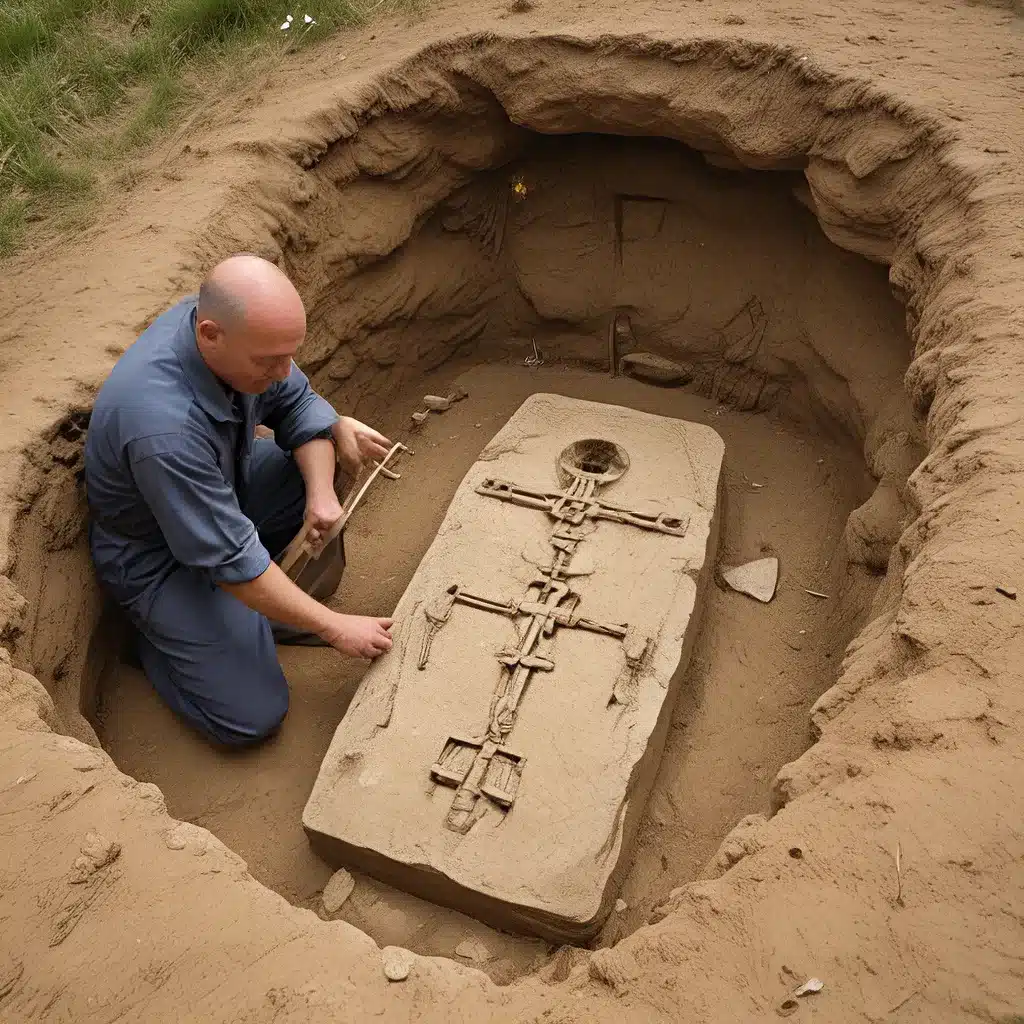
Throughout the annals of human history, the way in which societies have approached the rituals and customs surrounding death has been a captivating window into their deepest beliefs, cultural traditions, and connections to the divine. From the grand, towering pyramids of ancient Egypt to the intricate burial mounds of the Inca Empire, the material remnants of these ancient burial practices have long fascinated scholars, archaeologists, and the general public alike.
Revealing the Secrets of Egyptian Funerary Rites
One of the most iconic and thoroughly studied ancient burial traditions is that of ancient Egypt. The ancient Egyptians believed that the afterlife was a continuation of one’s earthly existence, and they meticulously prepared their deceased rulers, the pharaohs, for the journey into the next realm. The construction of the pyramids and their associated tombs was a testament to this belief, as these monumental structures were designed to serve as the final resting places for the pharaohs, complete with a vast array of funerary goods and provisions for the afterlife.
The discovery of the tomb of Tutankhamun in 1922 by British archaeologist Howard Carter was a seminal moment in the field of Egyptology, providing an unprecedented glimpse into the ancient Egyptian funerary tradition. The tomb, remarkably well-preserved and largely untouched, contained a treasure trove of artifacts, including the iconic golden funerary mask of the young king, as well as an abundance of personal belongings, jewelry, and even preserved food offerings – all intended to accompany the deceased ruler into the afterlife.
Exploring the Ritualistic Significance of Ancient Burial Practices
The ancient Egyptians were not alone in their intricate and reverent approach to honoring the dead. Many other ancient civilizations, such as the Inca Empire of South America and the Ancestral Puebloan culture of North America, also developed sophisticated burial practices that were deeply woven into their spiritual and cultural beliefs.
In the Inca Empire, for example, the practice of mummification was highly revered, as the Inca believed that the preserved bodies of their leaders and elite members of society would continue to play an active role in the community, even after death. These mummies were often adorned with intricate textiles, jewelry, and other symbolic objects, and were carefully maintained and venerated by the living.
Similarly, the Ancestral Puebloan people of the American Southwest developed a complex system of burial practices, which included the construction of elaborate burial chambers within their cliff dwellings. These chambers were often filled with a variety of personal belongings, tools, and even food offerings, all intended to provide for the deceased in the afterlife.
The Archaeological Significance of Ancient Burial Sites
The study of ancient burial practices has not only revealed deep insights into the spiritual and cultural beliefs of these long-gone civilizations but has also been instrumental in advancing the field of archaeology. The meticulous excavation and analysis of these burial sites have provided scholars with a wealth of information about the daily lives, social structures, and technological advancements of these ancient peoples.
For example, the discovery of the Nazca Lines in Peru, a series of enigmatic geoglyphs etched into the desert landscape, has been greatly informed by the study of Nazca burial practices. Archaeologists have found that many of these lines point towards specific burial sites, suggesting a deep connection between the Nazca people’s funerary rituals and their cosmological beliefs.
Similarly, the study of Scythian burial mounds in Central Asia has shed light on the sophisticated horsemanship and metalworking skills of these nomadic warriors, as well as their complex social hierarchy and religious beliefs. The richly decorated graves, filled with an abundance of weapons, jewelry, and even the remains of sacrificed horses, have provided a vivid glimpse into the Scythian way of life.
The Enduring Fascination with Ancient Burial Practices
The enduring fascination with ancient burial practices is a testament to the power of these rituals to connect us with the past and to reveal the core beliefs and values of long-vanished civilizations. As we continue to uncover new archaeological sites and deepen our understanding of these ancient practices, we are reminded of the profound and universal human need to honor the dead and to ensure their safe passage into the afterlife.
Through the study of these burial practices, we can gain a deeper appreciation for the diversity of human cultures and the shared experiences that have bound us together across the millennia. Whether it’s the grandeur of the Egyptian pyramids, the intricate textiles of the Inca mummies, or the haunting beauty of the Scythian burial mounds, these ancient sites remind us of the enduring power of the human spirit and the timeless desire to leave a lasting legacy for those who come after us.
As we explore the mysteries of ancient burial practices, we are not just uncovering the material remnants of the past, but also gaining a glimpse into the very heart of what it means to be human – our beliefs, our values, and our eternal quest to make sense of the great unknown that lies beyond the veil of death. The Lost Kingdoms website invites you to embark on this fascinating journey, where the secrets of the past await to be unlocked and the universal human experience is celebrated in all its rich diversity.


